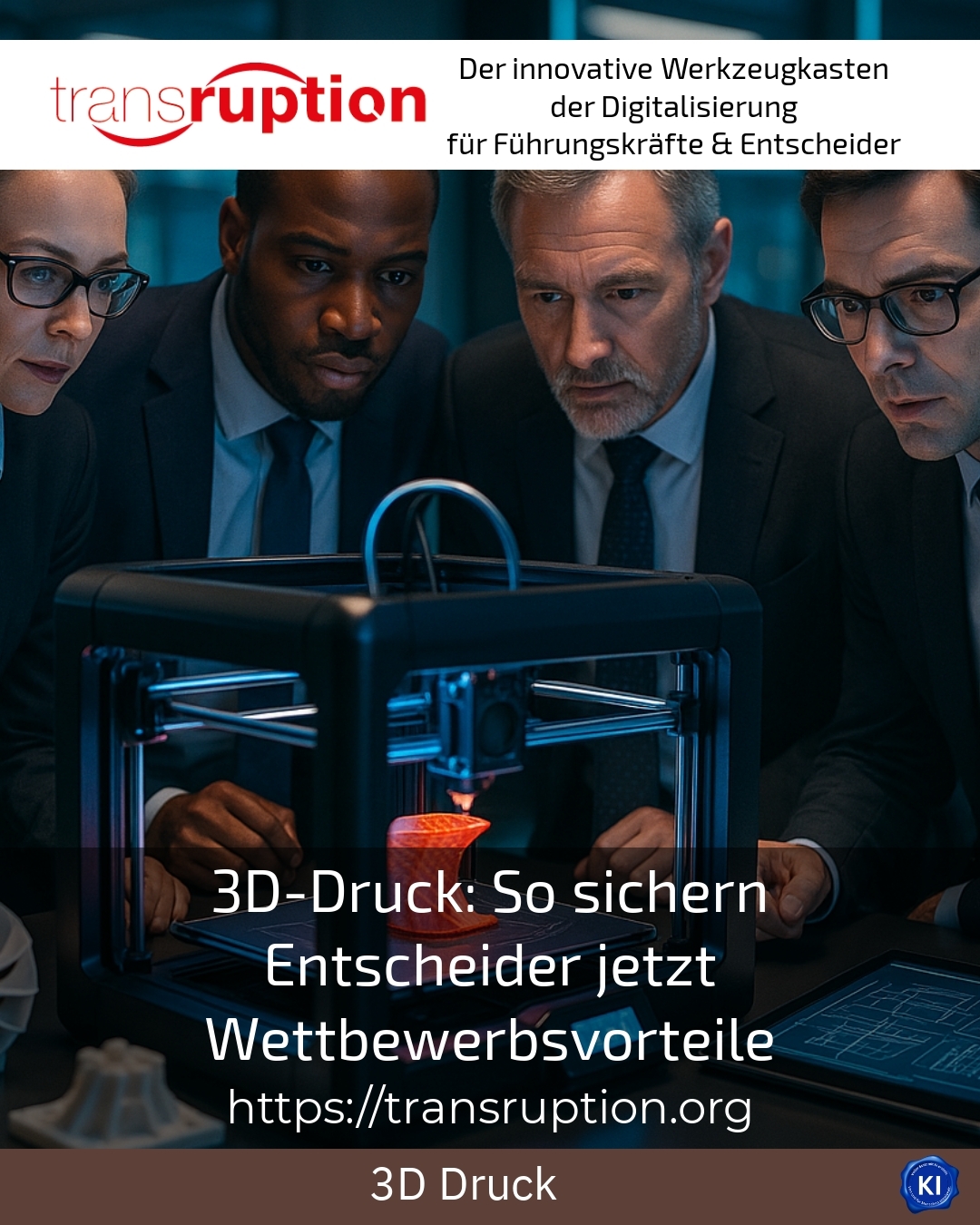3D printing is becoming increasingly important as an innovative manufacturing technology. Decision-makers who are now focussing on this method are creating sustainable competitive advantages for their company. The ability to manufacture customised products flexibly and quickly opens up a wide range of opportunities in dynamic markets. In this way, 3D printing not only enables a prompt response to market changes, but also supports the realisation of individual customer requirements efficiently and economically.
Flexibility and customisation through 3D printing
One of the greatest strengths of 3D printing is its flexibility. Companies can produce small series or individual items without expensive tools, which often makes traditional production methods more difficult. This is particularly true for industries that offer customised solutions for their customers - for example in medical technology, where customised prostheses are manufactured.
In jewellery design, 3D printing processes enable the production of personalised one-off items that would traditionally be very costly. The automotive supply industry also benefits from this: spare parts can be produced on site and in line with demand, which minimises storage costs and shortens delivery times.
Craftspeople are also increasingly turning to 3D printing to respond quickly to seasonal trends or limited editions. This can create new service offerings that would be almost impossible to realise using conventional methods.
BEST PRACTICE at the customer (name hidden due to NDA contract) A medium-sized mechanical engineering company implemented 3D printing to produce customised spare parts faster and more cost-effectively. This flexibility improved customer loyalty and increased production speed at the same time.
Rapid prototyping: Faster to market maturity
3D printing speeds up development processes considerably. Prototypes can be produced and tested within just a few days. This allows design errors to be recognised and corrected at an early stage, which significantly shortens the time to market. Start-ups and SMEs benefit from this as they can bring their innovative products to market more easily and cost-effectively.
An example from industry shows that a mechanical engineering company created functional prototypes using 3D printing in record time. This gave the company a decisive competitive advantage, as it was able to respond to customer requirements faster than the competition.
Companies in the consumer goods industry also use 3D printing for rapid product development. Tilt samples and design variants can be easily tested before series production starts. This often eliminates the need for time-consuming mould making.
Cost optimisation and resource efficiency
3D printing also offers economic advantages. For small and medium runs, the investment costs are significantly lower than with traditional processes such as injection moulding. Tools or moulds do not have to be produced separately, which makes it easier to start production.
Additive manufacturing also enables resource-saving production. Material is only used where it is needed. This efficiency reduces the consumption of raw materials and promotes sustainable manufacturing processes - an increasingly important factor in global competition.
In the transport and logistics sector, spare parts are printed directly at the point of need. This eliminates high storage costs and delivery delays, making the entire value creation process leaner and more cost-effective.
BEST PRACTICE at the customer (name hidden due to NDA contract) An automotive supplier uses 3D printing for complex components with variable designs. Production costs fell significantly as complex tooling costs were eliminated and storage space was reduced.
Support through coaching during implementation
The implementation of 3D printing technology is associated with challenges. Selecting the right systems and integrating them into existing processes requires expertise and experience. This is why many companies benefit from transruptions coaching. It supports projects, provides practical impetus and clarifies individual questions.
Clients report faster innovation cycles and the successful overcoming of technical and organisational hurdles. In this way, 3D printing can be optimally utilised as a strategic tool for competition.
BEST PRACTICE at the customer (name hidden due to NDA contract) A medium-sized plant manufacturer relied on external coaching support to integrate additive manufacturing into series production. Critical development phases were efficiently mastered through accompanying workshops and targeted know-how transfer.
3D printing - a decisive competitive advantage
3D printing opens up a wide range of opportunities for companies in the areas of product development, customisation and production efficiency. Decision-makers who adapt this technology at an early stage secure valuable competitive advantages. Flexibility, cost savings and the possibility of sustainable production are particularly important factors in highly competitive markets.
Many industries are already benefiting from 3D printing today: be it medical technology with customised prostheses, the automotive industry with demand-oriented spare parts or the skilled trades with exclusive small series. The innovative power of this technology will continue to grow in the future.
My analysis
3D printing is more than just a trend - it is a catalyst for innovation and flexibility in manufacturing. Companies that rely on this technology are able to react more quickly and agilely to market requirements. This allows them to better fulfil individual customer expectations and reduce costs.
The combination of technological progress and targeted support through coaching helps to fully utilise the potential of 3D printing. This results in a convincing strategy for decision-makers who want to secure long-term competitive advantages for their company.
Further links from the text above:
3D printing processes: Utilising competitive advantages for decision-makers
3D printing technology: utilising competitive advantages for decision-makers
Benefits of 3D printing for small businesses - Sculpteo
Success strategy - 3D printing - Harscher Prototyping
3D printing for small businesses: A competitive advantage - jsadd 3d
For more information and if you have any questions, please contact Contact us or read more blog posts on the topic TRANSRUPTION here.
















